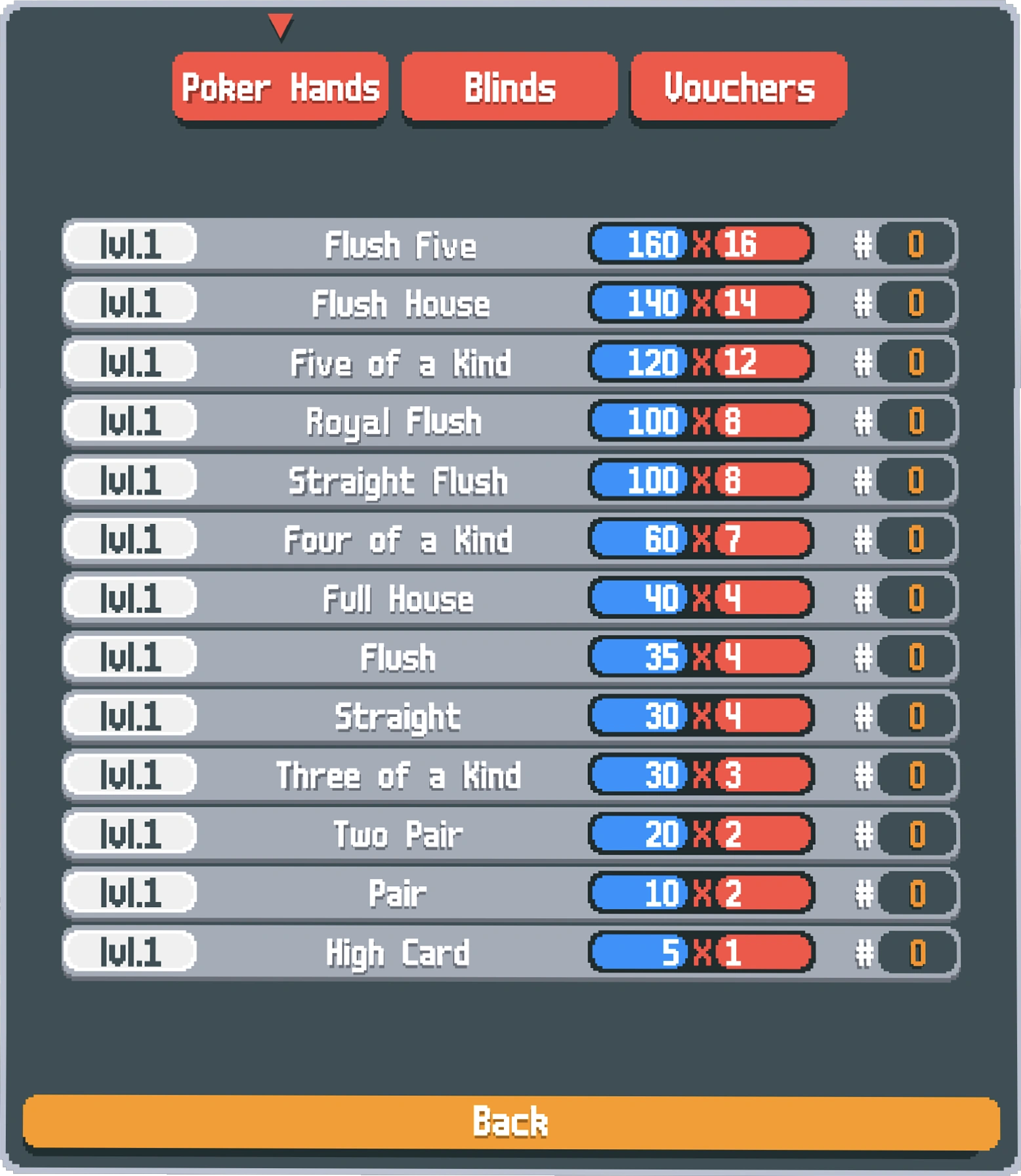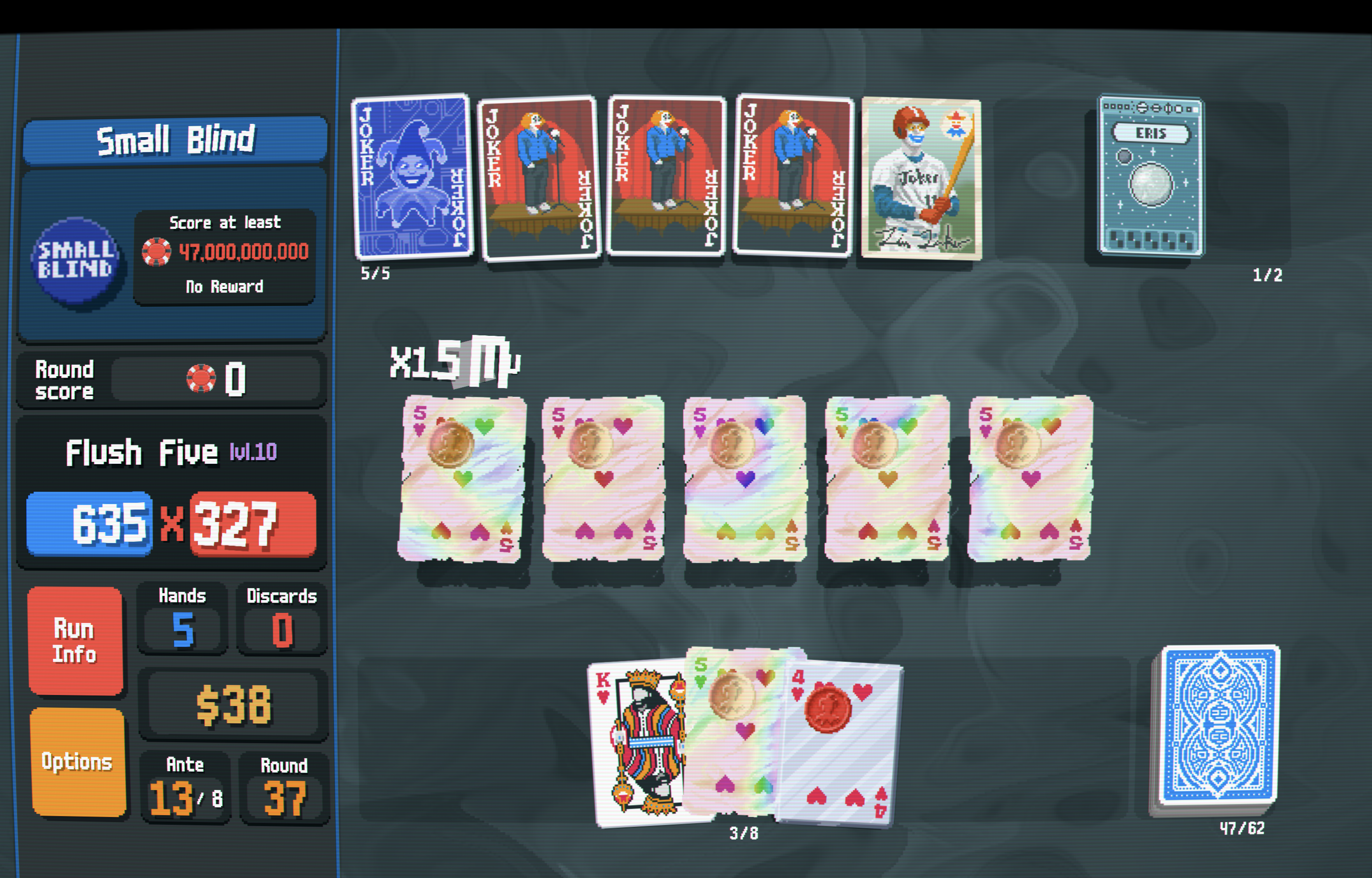Balatro And Food Prices
June, 2025
I used to enjoy going out to eat at restaurants. Sitting down and enjoying the company I was with, the atmosphere of the building, the typography and styling of the menus. I would order food I certainly wouldn't be able to replicate at home. The whole thing was satisfying. I wish I could say the same about my recent experiences. Every time I have gone to a restaurant in the last few months, I have left the building disappointed, and feeling like I spent more money than what it was worth. This is even the case in fast food joints. I shouldn't feel like I'm overpaying when I'm aiming to buy the cheapest food possible.
For a while, I theorized that my dislike of restaurants has grown steadily over the last few years as I began paying more often. But I don't think that's the only contributor. I think the deal you are getting when you go out to eat at a restaurant now, is just not the same as what it was 10 years ago when my uncle or parents would take my siblings and I out to eat.
What happened?
Well first it's no secret that the price of groceries has increased dramatically over the last few years. In 2024, the average price of monthly groceries was $1,227! [1] That's ridiculous! If you were generating minimum wage ($17.20), working 40 hours per week, you're making around $2,981 monthly. You're groceries alone cost a little more than 40% of your pay check!? The price of groceries is increasing at around 10% year to year, which is almost double the rate of inflation.
To explain the increase, I'll start by explaining a little bit about the Canadian food supply chain. It can be thought of as having three parts: the producers (farmers), the processors (manufacturing, packaging, wholesale, etc...), and the distributers (retailers) [2]. Though a lot of blame about the rising price of groceries has been placed on the retailers [3], it doesn't actually tell the whole story.

To illustrate an idea, I'm going to use an example from one of my favourite video games as of late, Balatro. Balatro is a poker roguelike where you beat levels by making poker hands and generating "chips" and "mult". Additionally, you make your hands more powerful by the user of "joker cards" that make specific hands more powerful. Here's an image of the Balatro hands and their associated scores:

You will notice "high card" as the lowest hand granting you 5 "chips" and 1 "mult" -- to calculate your final score, you simply multiply the two together. Things get interesting when you introduce jokers such as "The Family" which multiplies your "mult" by 4 if your hand contains four of a kind. If I play a four of a kind and add nothing else and I've played "The Family", then the hand would score 60 chips x 7 mult, but the mult is multiplied by 4 first. So the final score would actually by 60 x 28 = 1,680.
Through specific combinations of jokers in this game, people can scale their "mult" to ridiculously high numbers because of the compound multiplication of jokers. If I first multiply by 2, and then by 3, and then by 4, even if I started with a small number like 5, with this combination I end with a score of 120.

The same concept can be applied to the different parties of the Canadian food supply chain. At each step of the process, the price of the produce is increased by whoever is handling it so they can make a profit, and often it's not increased by a fixed number but by a percentage. If a farmer sells their produce to a manufacturer, who then multiplies their price by 50% and packages it before selling it a wholesaler. Then the wholesaler might increase the price by 25% before selling to a restaurant. And before it gets to your plate, the price listed on the menu might have a 300% increase from what the restaurant paid the wholesaler. [4]
Even if the produce starts cheap with the farmers, by the time it gets to the restaurants, it has jumped through so many hoops the price has increased massively. Something the farmer would sell for $3, using the example values above would cost you $16.88.
So yeah, it just doesn't feel worth it to go eat at restaurants anymore, because the price scales too quickly throughout the chain.
[1] Why is Food so Expensive in Canada? | Office of Institutional Commitments – Sustainability | University of Calgary. (n.d.). Retrieved June 30, 2025, from https://www.ucalgary.ca/sustainability/mobilizing-alberta/climate-action-blogs/why-food-so-expensive-canada
[2] How does Canada’s grocery supply chain work? What to know - National | Globalnews.ca. (2024, February 9). Global News. https://globalnews.ca/news/10283909/canada-grocery-supply-chain/
[3] Anthony, J. (2024, February 22). Inflation at the Grocery Store. Leger. https://leger360.com/inflation-at-the-grocery-store/
[4] Ultimate Guide to Restaurant Markups. (2009, April 9). HowStuffWorks. https://recipes.howstuffworks.com/menus/restaurant-markups.htm
📖 4 completions